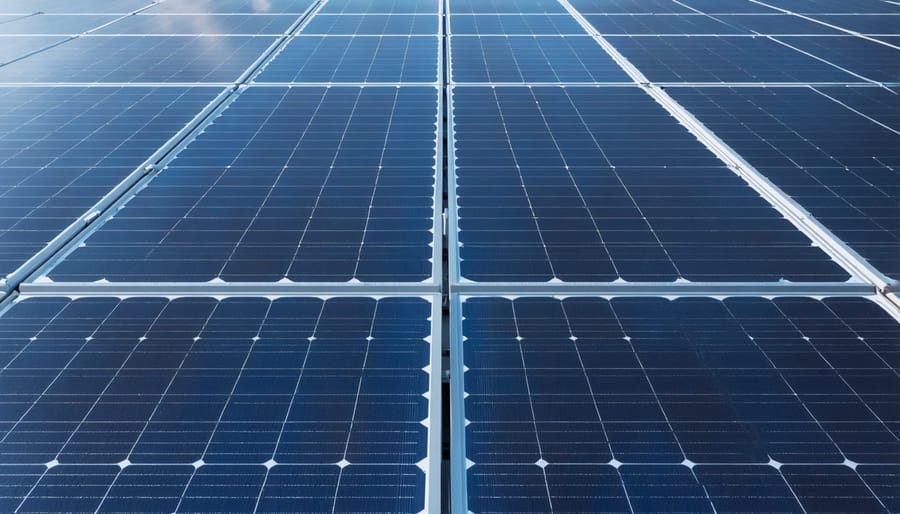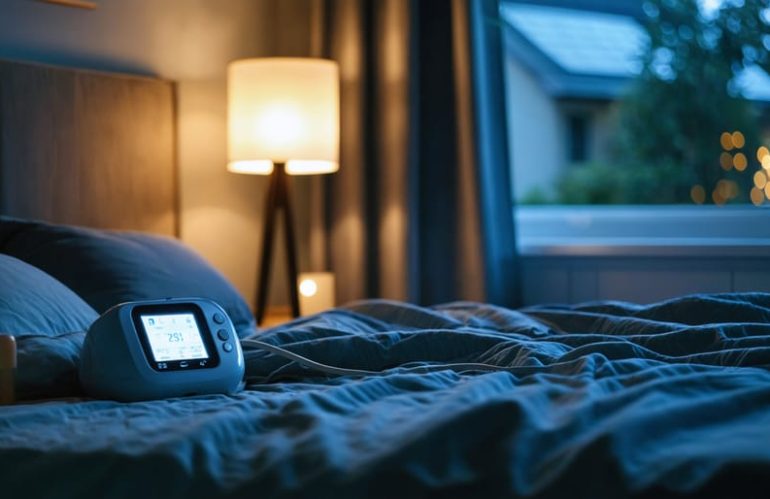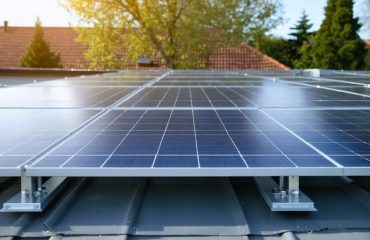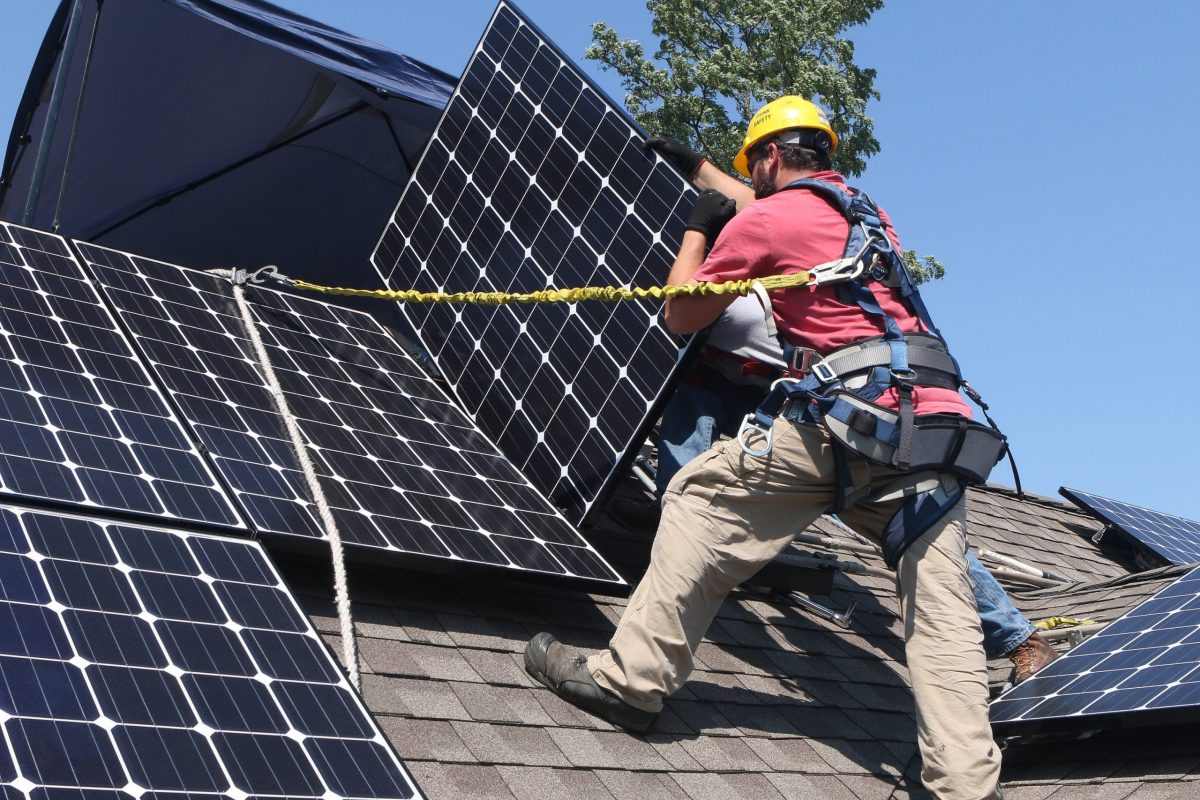**Power Your Life-Saving Equipment Without Worry**
Your oxygen concentrator, CPAP machine, or home dialysis equipment needs electricity to function—and when the grid fails, so does your health security. Solar panels paired with battery storage transform your home into a reliable medical sanctuary, keeping critical devices running through outages while slashing your monthly energy costs.
**Calculate your medical equipment’s power needs first.** A typical CPAP machine uses 50-80 watts per night, while oxygen concentrators require 300-400 watts continuously. Add these numbers together, multiply by hours of daily use, and factor in a 25% safety margin. This calculation determines your minimum battery capacity and solar panel requirements.
**Prioritize battery storage over panel size.** While solar panels generate power during daylight, your battery bank provides the round-the-clock reliability medical equipment demands. A properly sized lithium battery system delivers instant backup power, transitioning seamlessly when the grid drops—no interruption to your breathing machine or monitoring devices.
**Expect significant financial returns beyond medical peace of mind.** Solar systems supporting medical equipment qualify for the 30% federal tax credit, reducing upfront costs substantially. The equipment pays for itself through eliminated electric bills, typically within 7-10 years, while providing decades of reliable operation. Your investment protects both your health and your wallet, eliminating anxiety about power-dependent medical devices during storms, heat waves, or grid maintenance.
Why Home Medical Equipment Needs Uninterrupted Power
More families are choosing to manage health conditions at home rather than in medical facilities—a shift driven by comfort, cost savings, and advances in portable medical technology. This trend means many households now depend on medical devices that need reliable electricity to function properly.
Common devices that require constant power include oxygen concentrators that help people breathe easier, CPAP machines that prevent dangerous breathing interruptions during sleep, nebulizers for asthma and respiratory treatments, and even home dialysis equipment. Some medications must remain refrigerated to stay effective, making consistent power essential for both the medicine cabinet and the medical device closet.
When the power goes out, the consequences extend far beyond inconvenience. An oxygen concentrator stopping mid-use can create a genuine medical emergency. A CPAP machine failure means interrupted sleep and potential health complications for someone with sleep apnea. Dialysis patients face serious risks if their treatment schedule is disrupted. Even a few hours without power can spoil temperature-sensitive medications worth hundreds of dollars.
Unfortunately, power outages are becoming more common due to aging electrical infrastructure, severe weather events, and increased demand on the grid. While battery backups provide temporary relief—usually lasting just a few hours—they’re not designed for extended outages that can stretch for days.
The good news? You don’t have to feel vulnerable or dependent on the reliability of your local power grid. Understanding how much power your medical equipment actually uses is the first step toward creating a backup solution that genuinely protects your health and peace of mind. For families with medical equipment at home, energy independence isn’t just about saving money—it’s about ensuring the devices that maintain health and quality of life never stop working when they’re needed most.

The Problem With Traditional Backup Solutions
When medical equipment becomes essential in your home, reliable power isn’t just a convenience—it’s a necessity. Unfortunately, many families discover too late that their backup plans have significant gaps.
Relying solely on the electrical grid leaves you vulnerable. Even in areas with relatively stable power, outages happen due to storms, equipment failures, or grid maintenance. For someone depending on oxygen concentrators, CPAP machines, or motorized wheelchairs, even a brief interruption creates stress and potential health risks.
Traditional gas or diesel generators seem like a straightforward solution, but they come with serious drawbacks. First, they require constant fuel supplies, which become scarce or impossible to obtain during widespread emergencies. You’ll also need to store flammable fuel safely—a concern for many homeowners. The ongoing maintenance demands, from oil changes to spark plug replacements, add unexpected costs and complications.
The noise factor alone makes generators problematic for residential use, disturbing both your household and neighbors during what may already be stressful times. More seriously, improper generator use produces carbon monoxide—an odorless, deadly gas that sends thousands to emergency rooms annually. Even with careful placement, the risk remains.
Battery-only backup systems represent an improvement over generators, eliminating fuel dependency and safety hazards. However, they share a critical limitation: finite runtime. During extended outages lasting days or weeks, stored power eventually depletes. You’re left choosing which devices to power and rationing electricity rather than living normally.
The good news? Modern solar technology has evolved to address all these shortcomings, offering a backup solution that’s cleaner, quieter, and genuinely sustainable for long-term medical equipment needs.

How Solar Panels Create a Reliable Medical Power System
Solar Panels Generate Clean Daytime Power
Solar panels work by converting sunlight into electricity throughout the day, providing clean power to run your home and charge battery storage systems. A typical residential solar array—usually ranging from 5 to 10 kilowatts—can generate 20 to 40 kilowatt-hours of electricity daily, depending on your location and weather conditions.
During sunny hours, your solar panels produce more electricity than your home typically needs. This excess power automatically flows into your battery system, building up reserves for nighttime use or cloudy days. Think of it as filling up a gas tank while you drive—your panels are constantly replenishing your energy supply.
For homeowners with medical equipment, this daytime generation is particularly valuable because most devices run continuously, consuming power around the clock. A well-sized solar system can generate enough electricity during peak sunlight hours to both power your immediate needs and fully charge your batteries for overnight operation. This means your critical medical devices keep running without drawing from the grid, giving you true energy independence when you need it most.
Battery Storage Provides Night and Backup Power
Solar panels generate electricity during daylight hours, but what happens when the sun goes down or the grid fails? This is where battery storage becomes essential for anyone relying on medical equipment at home.
Modern battery systems capture excess solar energy produced during the day and store it for later use. Think of it as filling up a reserve tank—your panels create more power than you need during sunny hours, and the battery saves that extra energy for nighttime or emergencies. This means your oxygen concentrator, CPAP machine, or other critical devices keep running 24/7, regardless of what’s happening outside.
The real peace of mind comes during power outages. While your neighbors scramble for generators or wait for the grid to come back online, your home medical equipment continues operating seamlessly. Battery systems automatically kick in the moment they detect an outage, often so quickly you won’t even notice the switch.
Today’s batteries are surprisingly compact and low-maintenance. They’re designed to last 10-15 years with minimal attention, quietly doing their job in your garage or utility room. You can monitor their charge level through smartphone apps, giving you complete visibility into your power reserves.
For medical equipment users, this isn’t just about convenience—it’s about safety and independence. Battery storage eliminates the anxiety of “what if the power goes out?” and ensures that your health needs are always met, day or night, rain or shine.
Seamless Grid Integration
Modern solar panel integration systems work intelligently with your existing power setup. During normal conditions, your solar panels feed excess energy to the grid, often earning you credits that offset nighttime usage. Your medical equipment runs seamlessly, drawing from either solar power or the grid as needed.
When the grid goes down, your system automatically switches to battery backup within milliseconds—so fast that your medical devices won’t even notice the change. This instant switchover provides peace of mind that your critical equipment stays powered without interruption.
For extended cloudy periods or multi-day outages, many homeowners add a backup generator as an extra safety layer. Your solar system can coordinate with the generator, using solar power first and only activating the generator when absolutely necessary. This hybrid approach maximizes your renewable energy use while ensuring you’re never without power. The system manages everything automatically, so you don’t need to flip switches or monitor settings during stressful situations.
Calculating Your Medical Equipment Power Needs
Understanding your power requirements is simpler than you might think, and getting it right ensures your medical equipment runs reliably when you need it most. The good news? Most home medical devices use surprisingly little electricity compared to typical household appliances.
Start by checking the wattage label on each piece of medical equipment you use. This information is usually printed on the device itself or listed in the owner’s manual. Common devices include oxygen concentrators (typically 300-600 watts), CPAP machines (30-60 watts), nebulizers (100-200 watts), and home dialysis machines (400-800 watts). Don’t forget to include electric wheelchairs, hospital beds, or refrigerated medications if applicable.
Once you know your equipment’s wattage, multiply by the hours you use it daily. For example, a CPAP machine using 50 watts for 8 hours nightly consumes 400 watt-hours (0.4 kilowatt-hours) per day. An oxygen concentrator running 24/7 at 400 watts uses 9,600 watt-hours (9.6 kilowatt-hours) daily. Add up all your devices to find your total daily power requirement.
Here’s where battery storage becomes essential. You’ll want enough capacity to power your equipment for at least 24-48 hours during grid outages. If your medical devices need 10 kilowatt-hours daily, a battery system with 20-30 kilowatt-hours provides comfortable backup coverage. Your solar panels then need to generate enough electricity to run your equipment *and* recharge your batteries during daylight hours.
Most residential solar installations easily handle medical equipment alongside regular household needs. The key is properly sizing your solar system from the start. A qualified solar installer will calculate your specific requirements and recommend appropriate panel and battery capacity.
Remember to build in a 20-25% buffer above your calculated needs. Medical situations can change, and having extra capacity provides peace of mind. The investment in slightly larger system capacity pays dividends in reliability and flexibility for future needs.

Real Financial Benefits Beyond Emergency Preparedness
While having reliable backup power for medical equipment provides invaluable peace of mind, the financial advantages of solar integration extend far beyond emergency preparedness. In fact, many homeowners discover that their solar system pays for itself through everyday savings, making it a smart investment regardless of medical needs.
The most immediate benefit comes from reduced monthly electricity bills. Medical equipment that runs continuously—like oxygen concentrators, CPAP machines, or monitoring devices—can add $50 to $150 or more to your monthly electric bill. A properly sized solar system offsets these costs by generating free electricity during daylight hours and storing excess power in batteries for nighttime use. Many homeowners see their electricity bills drop by 70-90%, with some achieving complete energy independence.
Solar also acts as a hedge against rising energy costs. While utility rates have increased by an average of 3-5% annually over the past decade, your solar panels produce the same reliable energy at a locked-in cost. This predictability makes budgeting easier and protects you from future rate hikes that are outside your control.
The upfront investment becomes even more attractive when you factor in available incentives and tax credits. The federal solar tax credit currently covers 30% of your total system cost, including panels and battery storage. Many states and utilities offer additional rebates and performance incentives that further reduce your out-of-pocket expenses. Some homeowners recover 40-50% of their initial investment through these programs.
Additionally, solar systems typically increase property values by 3-4%, making your home more attractive to future buyers. Combined with decades of energy savings and minimal maintenance costs, solar integration delivers compelling financial returns while ensuring your medical equipment never loses power.
What to Look for in a Medical-Grade Solar Installation
When it comes to powering life-sustaining medical equipment, not just any solar system will do. You’ll want to ensure your installation meets specific standards that prioritize reliability and safety above all else.
**Battery Capacity is Your Lifeline**
The heart of any medical-grade solar system is its battery storage. Calculate your medical equipment’s power needs, then add a comfortable buffer—ideally 150-200% of your minimum requirements. This ensures you’ll have power during extended cloudy periods or unexpected emergencies. A quality installer will help you determine exactly how much backup power you need without overcomplicating the math.
**Automatic Transfer Switches: Your Safety Net**
An automatic transfer switch seamlessly shifts between grid power, solar, and battery backup without any action on your part. This means your oxygen concentrator or dialysis machine never experiences even a momentary interruption. It’s a non-negotiable feature for medical applications and integrates perfectly with your solar-ready home infrastructure.
**Real-Time Monitoring Matters**
Choose a system with user-friendly monitoring capabilities that let you check your battery levels and power production from your smartphone. You’ll gain peace of mind knowing your backup power is ready when needed, and you’ll receive alerts if anything requires attention.
**Professional Installation Standards**
Work exclusively with installers who have experience with critical power applications. They should provide clear documentation, proper permits, and follow medical equipment manufacturer guidelines. Don’t hesitate to ask for references from other customers with similar needs.
**Maintenance Made Simple**
Modern solar systems require minimal upkeep, but medical-grade installations should include a maintenance schedule. Most quality systems need only annual inspections and occasional battery checks—far less hassle than constantly worrying about power outages affecting your health equipment.
Combining solar power with home medical equipment creates a winning situation for your health and your wallet. You gain the peace of mind that comes from knowing your critical devices will continue running during power outages, protecting your wellbeing when you need it most. At the same time, you’ll enjoy significant reductions in your monthly electricity bills—savings that accumulate year after year.
The investment in solar panels and battery storage pays dividends beyond just emergency preparedness. Many homeowners see their systems pay for themselves within several years through energy savings, while also increasing their property values and reducing their environmental impact. For those dependent on medical equipment, these benefits come with the added assurance that their health isn’t left vulnerable to grid failures.
Every home’s medical power needs are unique, depending on the specific equipment you use and how often you rely on it. That’s why we strongly encourage you to consult with experienced solar professionals who can assess your particular situation. They’ll evaluate your medical devices’ power requirements, typical usage patterns, and backup needs to design a system that keeps you safe and saves you money.
Taking this step toward energy independence means investing in both your health security and financial future—a combination that’s hard to beat.









